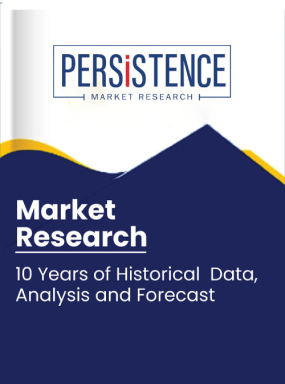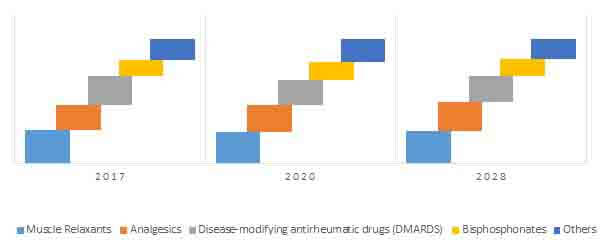ID: PMRREP22906| Upcoming | Format: PDF, Excel, PPT* | Healthcare

Musculoskeletal medicine incorporates spinal column and musculoskeletal disorders associated with sports, occupational injuries and age-related dysfunction. Musculoskeletal medicine is the diagnosis and management of all acute and chronic conditions affecting musculoskeletal system, i.e., muscles, bones, tendons, joints and ligaments and treatment of non-surgical lesions of the musculoskeletal system.
Conditions diagnosed by a musculoskeletal expert include soft tissues and muscular injuries, joint injuries, bone disorders, and arthritis and simple or complex pain conditions. Treatment other than medication may include acupuncture, physiotherapy, chiropractic care, therapeutic massage, structured rehabilitation programs and muscle stretching exercise.
Musculoskeletal disorders are common problems distressing the senior population. A better understanding of musculoskeletal diseases may lead to the accomplishment of effective preventive measures, thus reducing public healthcare expenditure and improving the quality of life in the geriatric population.
Technological advancements in orthopedic devices with increasing awareness among people may set for unprecedented demand for physical and occupational therapies and medicines and increase opportunities for healthcare suppliers and providers.
The World Health Organization estimated that musculoskeletal diseases are the fifth large cause of deaths due to disability. Globally, one in four people report chronic musculoskeletal damages in both developed and developing countries. Musculoskeletal conditions are accountable for a major health problem in the Australian health system, affecting around 31% of the inhabitants, more than 6 million Australians.
These conditions consume massive healthcare resources, representing almost 25% of the total cost of illness in the western countries.
Musculoskeletal conditions are the most common reason of physical disability with severe long-term pain. Back pain, joint disorders, osteoarthritis, rheumatoid arthritis and osteoporosis contribute to musculoskeletal diseases, and it has been targeted as a national health priority area with a national action plan by the Department of Health and Ageing.
Also, nowadays people are willing to devote time and money to educate themselves about treatment possibilities and generate a personalized care way that will assist them to reduce pain and sustain an active lifestyle.

The global musculoskeletal medicine market is majorly driven by the rise in geriatric population and also by increase in number of orthopedic physicians specialized in sports medicine, joint, hand and spine replacement. Increasing awareness among people regarding the disease and its treatment options and willingness to live longer are also factors contributing to the growth of the market.
Similarly, providing advanced academic training to the healthcare professionals of musculoskeletal disorders, such as medical doctors, nurses, occupational therapists, physiotherapists and other allied healthcare professionals, community practitioners and researchers is expected to boost the demand for musculoskeletal medicine and therapies in the global market.
Increasing prevalence of bone disorders and joint-related injuries is another factor driving the demand for musculoskeletal medicines across the globe.
However, the use of heavy-duty drugs in treating musculoskeletal pain is both inadequate and contradictory, strong data is needed to support clinical practice, which restricts the growth of the musculoskeletal medicine market in various regions.
Major portion of the market has been covered by muscle relaxants and analgesics segments, which include non-steroidal anti-inflammatory drugs (NSAIDs) and opioids. Analgesic are prescribed mostly in primary care when treating patients with a musculoskeletal condition.
The prescribing pattern of analgesics may follow the WHO analgesic ladder of prescription as there is a limited use of strong analgesics at first session. However, additional research into the field of musculoskeletal pain is required to determine if these patterns of prescribing represent the optimal management ways while managing musculoskeletal conditions.
The doctors prescribe drugs along with topical therapy. The method of treating pain with topical therapy is disappearing and the prominence is on opioids, NSAIDs and acetaminophen. If the condition is cannot be controlled by drugs and topical agents, the physicians recommend for injection therapy.
Hospital pharmacies and retail pharmacies segments both pose strong position in the market due to increase in demand for musculoskeletal therapies and treatment. These distribution channels contribute significant portion of revenue share in the overall market. Further, the growing trend of routine examination would flourish the growth of musculoskeletal medicine globally.
North America will continue to dominate the global market due to availability of more number of hospitals and clinics. Europe is expected to hold second largest market share in global musculoskeletal medicine market due to growing awareness among individuals for chronic diseases.
Examples of some of the key players identified in the global musculoskeletal medicine market are as follows:
| Small-Scale Manufacturers/Providers |
|
| Medium-Scale Manufacturers/Providers |
|
| Large-Scale Manufacturers/Providers |
|
The report covers exhaustive analysis on:
The market sizing of musculoskeletal medicine will be done by the adoption data triangulation approach, which is primarily based on experimental techniques such as patient-level data to obtain precise market estimations and insights on drug classes and preferred modes of administration.
Bottom-up approach is always used to obtain insightful data for the specific regions. The country-specific data is again analyzed to derive data at a global level. This methodology ensures high quality and accuracy of information.
Secondary research is used at the initial phase to identify the disease epidemiology, diagnosis rate and treatment pattern, as per disease indications. Each piece of information is eventually analyzed during the entire research project, which builds a strong base for the primary research information.
Primary research participants include demand-side users such as key opinion leaders, physicians, surgeons, nursing managers, clinical specialists who provide valuable insights on trends and clinical application of the drugs, key treatment patterns, adoption rate, and compliance rate.
Quantitative and qualitative assessment of basic factors driving the demand, economic factors/cycles and growth rates and strategies utilized by key players in the market is analyzed in detail while forecasting, in order to project Year-on-Year growth rates. These Y-o-Y growth projections are checked and aligned as per industry/product lifecycle and further utilized to develop market numbers at a holistic level.
| By Drug Type |
|
| By Route of Administration |
|
| By Distribution Channel |
|
|
Region |
|
Delivery Timelines
For more information on this report and its delivery timelines please get in touch with our sales team.
About Author